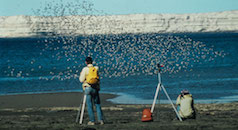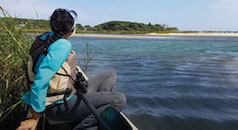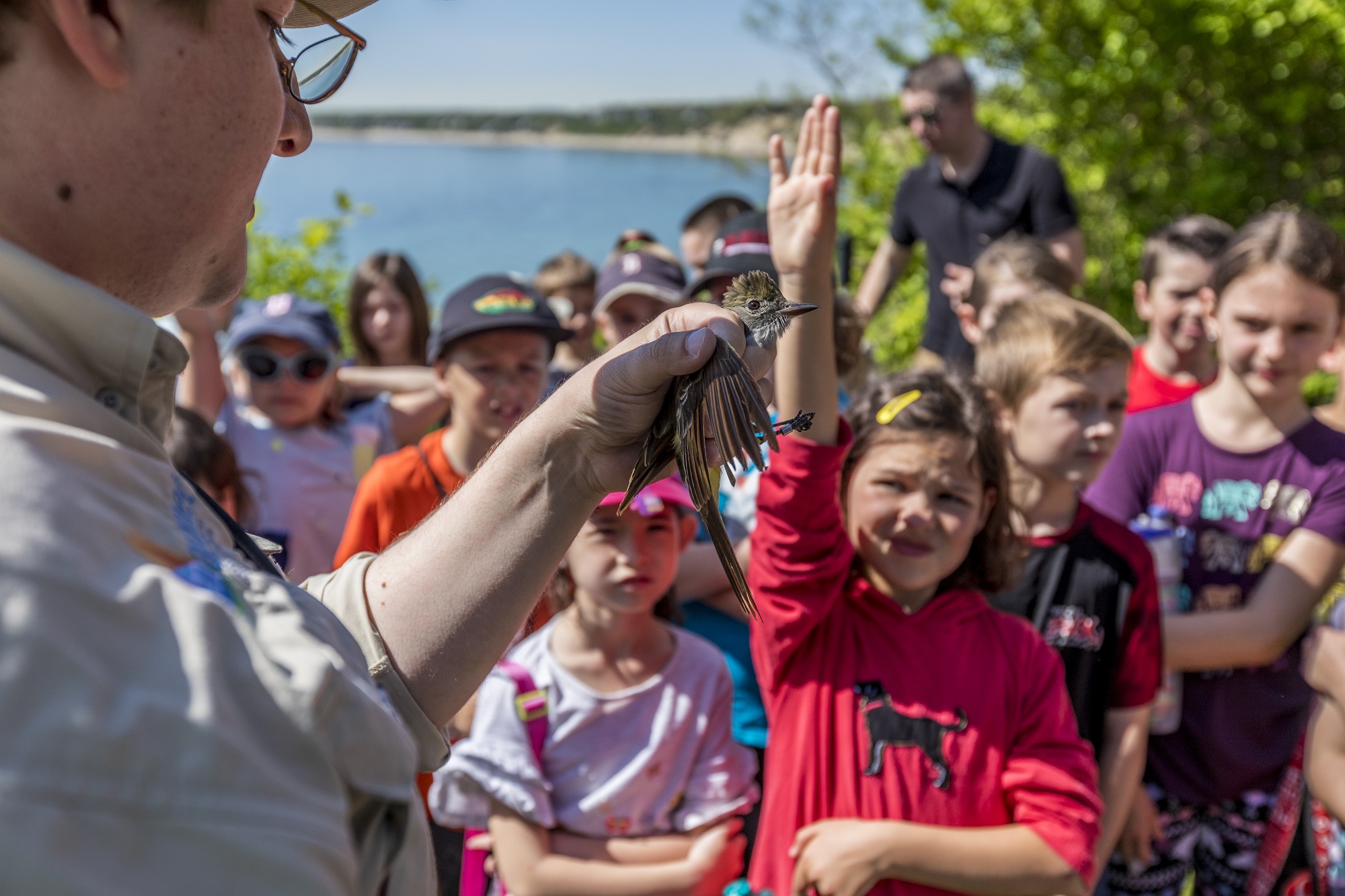
She trekked across Suriname to assess the overall health, threat, and conservation actions needed at the country’s three WHSRN Sites of Hemispheric Importance:
- Bigi Pan Multiple Use Management Area (MUMA) in Nickerie District,
- Coppenamemonding Nature Reserve in Saramacca District,
- Wia Wia Nature Reserve in Commewijne District.
Morehouse and site partners also celebrated this year’s 25th anniversary of the sites’ WHSRN designations.
All three coastal sites are rich in mangroves and mudflats that support hundreds of thousands of migratory shorebirds each year—Semipalmated Sandpiper most abundantly. However, recent surveys by New Jersey Audubon and partners have found that this long-distance migrant’s total population has declined by as much as 80% in the last 30 years.
 In partnership with Suriname’s Ministry of Physical Planning, Land Use, and Forest Management (RGB); New Jersey Audubon; and Friends of Nature Conservation Suriname, Morehouse facilitated three two-day workshops in Nickerie, Saramacca, and Paramaribo (nation’s capital) with a diverse group of local partners and stakeholders to complete the WHSRN Site Assessment Tool (SAT) for each WHSRN site.
In partnership with Suriname’s Ministry of Physical Planning, Land Use, and Forest Management (RGB); New Jersey Audubon; and Friends of Nature Conservation Suriname, Morehouse facilitated three two-day workshops in Nickerie, Saramacca, and Paramaribo (nation’s capital) with a diverse group of local partners and stakeholders to complete the WHSRN Site Assessment Tool (SAT) for each WHSRN site.
Participants ranged in number from 10-20 per SAT workshop and represented federal and district government agencies, environmental educators, shorebird scientists, game wardens, fishermen, hunters, the state oil company, and tourism operators.
“The SAT workshops are participatory,” explained Morehouse. “This means that the group decides on answers and scores by consensus in an environment where everyone has a voice—which in Suriname, a former colony of The Netherlands, is primarily in Dutch.” This was a first for Morehouse, a seasoned SAT facilitator.
Marijem “Marie” Djosetro, Permanent Secretary of RGB, was instrumental in gathering partners to the SAT workshops, participating in each one herself, and rejuvenating the federal government’s commitment to maintaining these high-quality areas for shorebirds.
 All three sites are federally protected. Two are nature reserves, off-limits to any human activities, while Bigi Pan MUMA allows limited human access and use that is well regulated and enforced. Illegal hunting of shorebirds, particularly at Bigi Pan and Coppenamemonding, is a growing concern for the Suriname Forest Service (LBB) and game wardens in LBB’s Nature Conservation Division (NCD).
All three sites are federally protected. Two are nature reserves, off-limits to any human activities, while Bigi Pan MUMA allows limited human access and use that is well regulated and enforced. Illegal hunting of shorebirds, particularly at Bigi Pan and Coppenamemonding, is a growing concern for the Suriname Forest Service (LBB) and game wardens in LBB’s Nature Conservation Division (NCD).
Dr. David Mizrahi, Vice-president for Research and Monitoring for New Jersey Audubon and Dr. Arie Spaans, Founder of Friends of Nature Conservation Suriname, are currently using their years of experience in shorebird research in Suriname to understand the scope of shorebird poaching and help partners to find long-term solutions to this problem. Mizrahi and Spaans generously provided their shorebird expertise as participants in each SAT workshop, and contributed key logistical and financial support as well.
Workshops were made possible by funding from the Canadian Wildlife Service. Many of the species that breed or stopover in the Canadian Arctic spend part of their life cycle in Suriname and other northern South American countries.
Photos from the workshops and anniversary celebration are available on WHSRN’s Facebook page.
For more information, contact Meredith Gutowski Morehouse, WHSRN Conservation Specialist, Manomet Center for Conservation Sciences.





 Back to all
Back to all